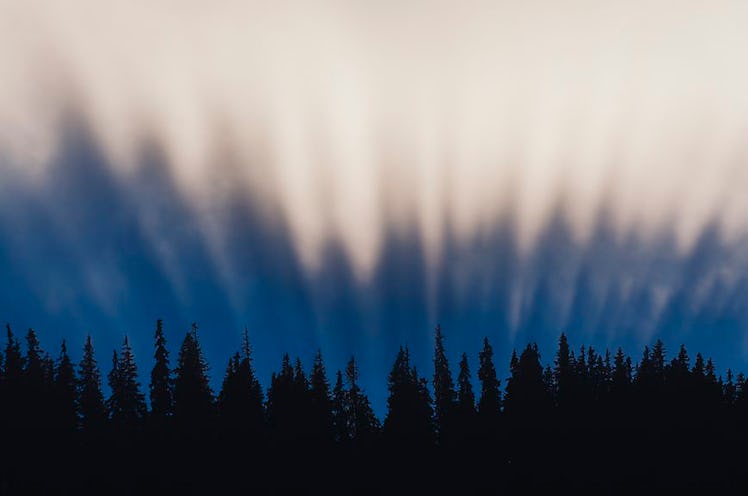
6 Myths About The Winter Solstice That Shed A Little Light On A Mostly Dark Day
We're coming up on the shortest day of the year, which usually means an early bedtime, some Chinese food delivery, and a half-finished attempt at watching Love Actually to get in under the wire before Christmas. The winter solstice, which will take place on Thursday, Dec. 21, is often just known for being the shortest day of the year, when in fact, it's actually a Pagan holiday rich with tradition. This naturally means that there are a ton of winter solstice myths, some completely outlandish and some pretty reasonable, all of which are worth looking into as the shortest day of the year comes closer and closer.
The winter solstice scientifically marks the shortest day and the longest night of the year for everyone in the Northern Hemisphere, and with that universal solar experience, it's natural for a whole bunch of absurd theories and traditions to come with it. Since the religious aspects of the solstice are less mainstream nowadays (raise your hand if you're a Pagan), we tend to forget that the short night a few days before Christmas might actually mean something in its own right.
You might not want to have a winter solstice party, but if you did, it would probably be the longest party of the year. Here are six myths about the winter solstice to set you straight before the longest night of the year.
01The Winter Solstice Is The Longest Night Of The Year
So, yes, the winter solstice is the longest night of the year, but only if you live in the Northern Hemisphere. If you live in the Southern Hemisphere, your winter solstice is between June 20 and 22. Yes, this may seem obvious, since each hemisphere is on the opposite side of the planet, but hey, a quick geography lesson never hurt anyone.
02People Don't Even Celebrate The Winter Solstice
Sure, the winter solstice happens at a pretty dark and cold time of the year for most of us up here in the Northern Hemisphere. Plus it's only a few days before a certain other holiday that's a little bit, um, more popular, but that doesn't mean people don't celebrate the winter solstice in other parts of the world.
Believe it or not, there are tons of spiritual and Pagan practices that people perform to celebrate the winter solstice, many of them similar to the festivities we usually tie to the new year holiday and Christmas: feasts, gift-giving, and celebrations over the new (solar) year.
03The Winter Solstice Marks The First Day Of Winter
The first day of winter can technically occur on several days, depending on which calendar you follow. For example, the meteorological season marks the first day of winter at Dec. 1, whereas the astronomical season is the one that clocks the beginning of winter during the solstice on Dec. 21.
04The 2017 Winter Solstice Will Be The Worst Day Of The Year
OK, this one is pretty dramatic, but apparently there are some people who believe that this winter solstice will be a pretty awful day, primarily because it coincides with Mercury being in retrograde until Dec. 23.
With all of these astronomical events working against us (shorter days filled with chaos — lovely), it might be ideal to plan a stay-at-home party to celebrate the solstice, just to be safe.
05The Earth Is The Closest To The Sun During The Winter Solstice
The Earth does not orbit the sun in a perfect circle; rather, it works in an elliptical shape, so that there's a point in the year when Earth is closest to the sun, and a point at which it's farthest from the sun. The funniest thing about this is that neither of those times are related to the winter or summer solstice.
Earth is closest to the sun around Jan. 7, and farthest from the sun around July 7. The more you know, y'all.
06The Winter Solstice Is All About Darkness
On the contrary, much of the winter solstice is about lightness and rebirth. One of the most popular Pagan myths surrounding the winter solstice is about the Norse Goddess Frigga, who gave birth to her "young sun" on the winter solstice, a birth that is viewed as giving light to darkness.
For this reason, the longest night is also known in northern Europe as the "Mother's Night," a day focused on rebirth, light, and forward movement.
See? Winter isn't that bleak, people! You just need to channel your inner Frigga.